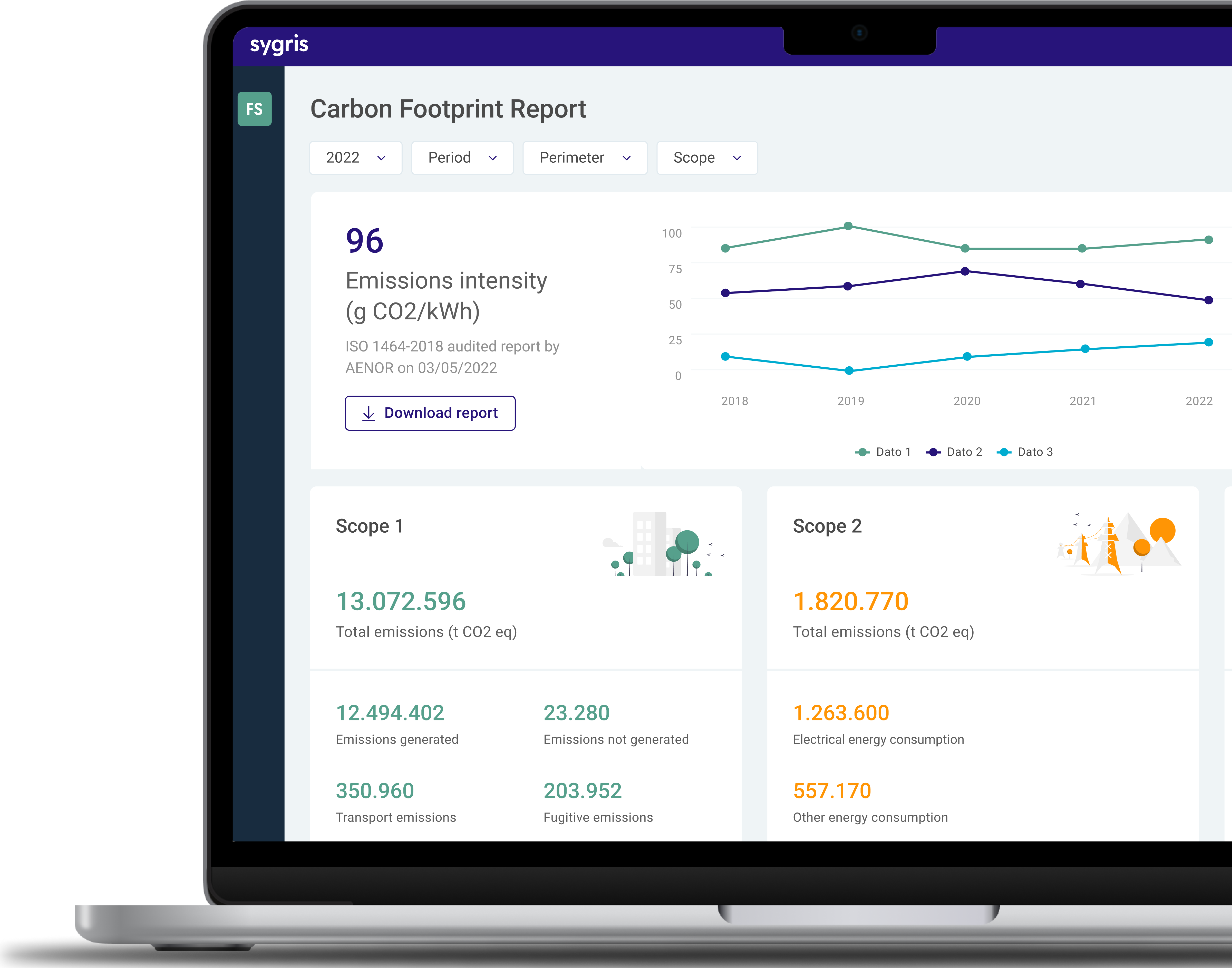The fight against deforestation is one of the most urgent environmental challenges. In this context, the European Union Deforestation-free Products Regulation (EUDR) emerges as a key tool to transform supply chains and ensure that products traded within the European Union do not contribute to forest destruction. This guide aims to clearly and comprehensively explain what the EUDR is, who must comply with it, how to do so, and its implications in terms of ESG.
What is the EUDR?
The EUDR is a regulation approved by the European Union to curb deforestation and forest degradation associated with the production and trade of certain raw materials and derived products. Its primary goal is to ensure that products entering the European market are “deforestation-free”, meaning they do not originate from land that has been deforested or degraded after 30 December 2025.
The affected products include:
- Palm oil and its derivatives
- Soya and derived products
- Coffee and cocoa
- Beef and other meat products
- Timber and wood-based products (including paper and pulp)
- Rubber and derived products
The EUDR is based on the principle of due diligence, requiring operators and traders to implement traceability systems that ensure the legality and sustainability of their supply chains. In other words, each company must be able to demonstrate, with verifiable information, that its raw materials have not been obtained at the expense of deforestation and have not violated the local laws of producing countries.
Who must comply with the EUDR?
The EUDR has a broad scope and affects various parts of the supply chain:
- Operators and first placers: These are entities that introduce products to the EU market or export them from the Union. This includes both European producers and importers of raw materials.
- Traders and distributors: Companies that, while not necessarily producers, are responsible for distributing or processing the products within the European territory.
The regulation applies to both large corporations and SMEs, although there are different deadlines for implementation. Initially, the regulation was set to come into effect on 30 December 2024 for larger companies and on 30 June 2025 for micro and small enterprises. However, due to the complexity of compliance and international pressures, delays have been proposed, with some cases pushing the new deadlines to December 2025 for large operators and June 2026 for SMEs.
How to comply with the EUDR?
Complying with the EUDR requires a meticulous approach and the implementation of a due diligence system that guarantees traceability and legality throughout the supply chain. Below are the fundamental steps to achieving this:
1.Supply chain mapping
To comply with the EUDR, businesses must adopt a strategic and holistic approach covering the entire supply chain. First and foremost, it is essential to conduct a thorough mapping of the supply chain, identifying all suppliers and sub-suppliers, as well as precisely determining the origin of each raw material through geolocation of production sites. This stage involves gathering detailed data on the country of origin, harvesting or extraction dates, and any certifications supporting sustainable practices.
2.Implementing a due diligence system
Once this information is obtained, the next step is to implement an internal due diligence system to assess and manage risks associated with deforestation. This system must include:
- Information collection: Documenting product descriptions, volumes, tariff codes, country of origin, and geographic coordinates.
- Risk assessment: Conducting an analysis to classify the risk level (low, standard, or high) based on the country or region of production.
- Mitigation measures: If risks are identified, corrective actions should be taken, such as additional audits or changing suppliers.
3. Establishing traceability protocols
Traceability is fundamental to this process, making it essential to establish robust protocols that ensure each product can be verifiably tracked across all stages of production and trade. The use of advanced technologies, such as geolocation systems, digital platforms, and blockchain, can facilitate this monitoring, ensuring secure and transparent records.
4. Training and collaboration with partners
Training internal teams and closely collaborating with suppliers are key elements for achieving compliance. It is crucial that all stakeholders understand the implications and requirements of the EUDR, which can be achieved through specialised training and open dialogue to collect the necessary information in a timely manner.
5. Submitting the Due Diligence Statement (DDS)
Once all the information is collected and verified, companies must prepare and submit the DDS to demonstrate that all due diligence obligations have been met. The gathered information must be stored for at least five years and be available to competent authorities in case of audits or inspections.
6. Continuous review and improvement
Compliance with the EUDR is not a one-off task but a continuous process. Therefore, it is essential to conduct periodic internal audits to identify potential improvements in the due diligence system. Furthermore, it is important to update protocols and traceability systems based on regulatory changes and lessons learned during implementation. If necessary, external advice and third-party certification should be sought to validate supply chain compliance.
Benefits of complying with the EUDR
Beyond avoiding penalties and ensuring access to the European market, complying with the EUDR offers multiple advantages for businesses:
- Reduced legal and reputational risks: By demonstrating a commitment to sustainable practices, businesses protect their reputation and avoid potential fines or market restrictions.
- Competitive advantage: Companies that invest in traceability and sustainability position themselves as leaders in environmental responsibility, which can attract increasingly conscious consumers and investors interested in ESG (Environmental, Social, and Governance) criteria.
- Improved supply chain efficiency: Implementing digital systems and continuously reviewing internal processes help identify areas for improvement and optimise supply chain management.
- Contribution to the fight against climate change: By preventing deforestation and promoting sustainable production practices, businesses help reduce greenhouse gas emissions and preserve biodiversity.
Challenges and opportunities in implementing the EUDR
Implementing the EUDR is not without challenges. On one hand, the complexity of global supply chains, composed of multiple supplier levels, makes achieving complete traceability difficult. Additionally, adopting advanced technologies require significant investment, especially for small and medium-sized enterprises. Another key challenge is the need to effectively coordinate all stakeholders involved, as successful compliance depends on collaboration between producers, distributors, certifiers, and authorities; any lack of information or resistance at any stage can compromise the integrity of the system.
However, these challenges also open the door to valuable opportunities. The requirement to comply with the EUDR drives technological innovation, encouraging the development of digital tools that enhance traceability and operational efficiency. The process of mapping and detailed reviewing of the supply chain helps identify inefficiencies and build stronger, more transparent relationships with suppliers. Additionally, by adapting to strict European standards, companies gain access to a consumer market with high sustainability requirements, giving them a competitive edge over those that fail to adapt.
Finally, organisations that position themselves as responsible and committed to sustainability strengthen their reputation, gaining the trust of consumers and investors, which translates into greater business opportunities and long-term loyalty.
The EUDR represents a milestone in the fight against deforestation and forest degradation, driven by the European Union as part of its commitment to the Green Deal and the fight against climate change. For affected companies, complying with this regulation is an opportunity to transform their supply chains, enhance traceability, mitigate risks, and position themselves as sustainability leaders.
While the implementation process may be complex and require investments in technology and training, the benefits, both in terms of reputation and access to more demanding markets, far outweigh these efforts. Adopting a strategic and collaborative approach, including team training, investment in monitoring systems, and close cooperation with suppliers and certifiers, will be essential to comply with the EUDR while contributing to the protection of our forests and the planet.





